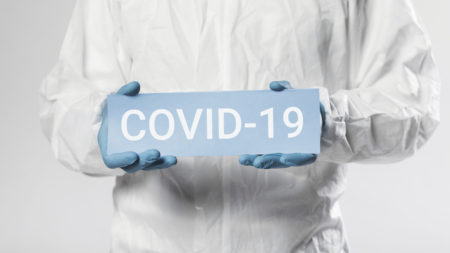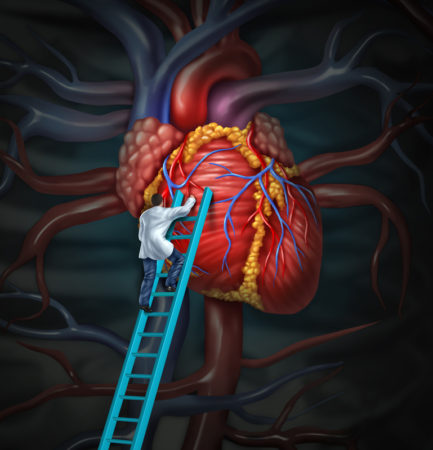Symptoms of COVID-19 have been expanded into a new list by the CDC. (Centers for Disease Control and Prevention) There are six official new symptoms on the COVID-19 menu. The additions have caused FLASS to name it as The Great Pretender. This is because, like a few other diseases, the coronavirus, can cloak itself as so many different disguises. At first, the CDC only noted fever, cough, and shortness of breath as symptoms of the presence of the Coronavirus inspired disease, COVID-19.
Symptoms Update: The Many Disguises for the Presence of the Coronavirus

COVID-19 Parades So Many Symptoms, We Might Call It The Great Pretender.
The CDC updates include these new manifestations:
- chills,
- repeated shaking with chills,
- muscle pain,
- headache,
- sore throat,
- new loss of taste or smell.
- Plus the CDC changed “Shortness of breath” to “shortness of breath or difficulty breathing.”
Your New List of Symptoms of COVID-19 Plus More Below
Thus, the new, FLASS full list of COVID-19 Symptoms and Signs now is:
- Fever
- Cough
- Shortness of breath or difficulty breathing
- Chills
- Repeated shaking with chills
- Muscle pain
- Headache
- Sore throat
- New loss of taste or smell
But here is a unique exception: Neither a runny nose nor sneezing is a symptom of the virus.
The CDC reports “People with COVID-19 have had a wide range of symptoms reported. They range from mild symptoms to severe illness.” The report now reads, Any of the now nine symptoms may appear anywhere from 2-14 days after exposure to the virus, according to the agency.”
When You Worry You Might Have COVID-19: The FLASS Fab Four Symptoms

Wear Your Mask and Wash Your Hands.
If you are afraid you might have caught the coronavirus, you might be experiencing the FLASS Fab Four Coronavirus Symptoms. As we have previously advised, FLASS, like the CDC, urges you to seek medical attention immediately if you exhibit any of these emergency warning signs:
1. Trouble breathing.
2. Persistent pain or pressure in the chest.
3. New confusion or inability to be aroused.
4. Bluish lips or face.
A Few Words to Offset Fears
The following may soften the impression the new list of COVID-19 symptoms might make on you. Also, we remind you that “Dr. William Jaquis is president of the American College of Emergency Physicians. (ACEP) Dr. Jaquis told CBS News in March that the “three most common symptoms were fever, a dry cough, and shortness of breath. “Medical experts say body aches, sore throat and fatigue sometimes occur with coronavirus, but are more often associated with the flu.” Still, FLASS believes you should check with your doctor or healthcare provider, and avoid self-diagnosis.
Many Diseases Are Great Mimics, Due to their Multiple Symptoms
WHO adds yet another very interesting symptom: Tiredness. They list the most common symptoms are fever, dry cough, and tiredness. They state, “Some patients may have aches and pains, nasal congestion, sore throat or diarrhea,” reads the WHO’s website.
“These symptoms are usually mild and begin gradually. Some people become infected but only have very mild symptoms.” With All These symptoms –and more–you can see why FLASS has begun calling COVID-19, “The Great Pretender.”
While about 80% of people recover from the disease without needing hospital treatment, the WHO warns that “around 1 out of every 5 people who get COVID-19 becomes seriously ill and develops difficulty breathing.”
With All These Symptoms, You Can See Why We Name COVID-19, “The Great Pretender.” And we learn more from the World Health Organization:
“Anyone can catch COVID-19 and become seriously ill,” according to WHO. “Even people with very mild symptoms of COVID-19 can transmit the virus. People of all ages who experience fever, cough, and difficulty breathing should seek medical attention.”
FLASS GETS on Track With Symptoms of a Direct Attack from the Coronavirus

COVID-19 Attacks More Organs Than Just Your Lungs.
To better understand proliferating lists of symptoms of COVID-19. Let’s take a look at how this virus attacks the body.
1. The Case of the Mildly Ill Patient:
Many mildly ill or asymptomatic patients fight the virus at its point of origin, right in the upper airway. “These people may have symptoms only in the upper airway, at the site where they were first infected. But when someone’s body can’t destroy the virus at its entry point, viral particles march deeper into the body.”
2. The Case of the Progressively Ill Patient:
From the airway, coronavirus can invade the body by multiple routes. It can travel into the digestive tract as well as the lungs.
Symptoms of COVID-19 Extend and Expand
With sicker and sicker patients, we see respiratory symptoms grow. However, doctors are seeing other symptoms, too. “There’s clearly a respiratory syndrome. And that’s why people end up in the hospital. Also, some people get a gastrointestinal illness with diarrhea and maybe some abdominal pain.” This “may or may not be associated with a respiratory illness,” says Vinetz.
3. The Case of the Seriously Ill Patient:
Once the coronavirus has achieved major infection, it attacks other organs like the heart muscle. Once the virus is deeply embedded in the body, it begins to cause more severe disease. “This is where the direct attack on other organs that have ACE2 receptors can occur, including heart muscle, kidneys, blood vessels, the liver, and potentially the central nervous system. Thus, this may be one reason for the vast array of symptoms COVID-19 can cause.”
4. Collateral Damage: The Case of the Critically Ill Patient
With COVID-19, “Severe damage to the lungs may be one trigger that activates and overstimulates the immune system through a barrage of signaling chemicals, known as cytokines.”
This signals a “cytokine storm.” To put it briefly, the “cytokine storm” is much more than a symptom. “This is a complex interplay of chemicals that can cause blood pressure to drop, attract more killer immune and inflammatory cells, and lead to even more injury within the lungs, heart, kidneys, and brain.” This is the point at which the patient’s condition severely declines. “Some researchers say cytokine storms may be the cause of sudden decompensation, leading to critical illness in COVID-19 patients.”
And There is More to the Story: a Clotting Symptom

By the Way: Sending a Big Bouquet of Gratitide! FLASS Thanks All the Health Professionals on the Front Line.
You might have already heard of another severe symptom: Abnormal clotting, known as thrombosis. In COVID-19. Physicians have reported, “large-vessel clots, including deep vein thrombosis (DVT) in the legs and pulmonary emboli (PE) in the lungs; clots in arteries, causing strokes. Likewise, they are seeing “small clots in tiny blood vessels in organs throughout the body.” Pathologists have confirmed in early autopsies that they have found “widely scattered clots in multiple organs.”
Adam Cuker, MD, a hematologist at the Hospital of the University of Pennsylvania stated that “these clots are happening at high rates even when patients are on blood thinners for clot prevention.” Plus, we know that “In one study from the Netherlands, 31% of patients hospitalized with COVID-19 got clots while on blood thinners.”
Even Cures Can Hurt When COVID-19 Goes Critical
As you might suspect, any severe illness like COVID-19 can bring collateral damage to the body. Thus, critically ill patients suffer from low blood pressure, low oxygen levels, ventilator use, and drug treatments. These treatments all take their toll on the heart, kidneys, liver, brain, and other organs.
Manifestations Not in the Nose, but in the Toes
And last but not least of all these symptoms in which COVID-19 can disguise itself, we must mention COVID toes. The symptom seems to manifest almost like frostbite, with red, and purple discoloration as well as swelling and painful tenderness.
“It’s not uncommon, when there’s a viral process, to have skin manifestations,” explains Amy Paller, M.D.Amy is the department chair of dermatology at Northwestern University and one of the first dermatologists to link the symptom to COVID-19.
Newsflash: Remdesivir is Effective against COVID-19 Symptoms
It seems significant that we end this article, not with more symptoms of COVID-19, but with the announcement of an effective treatment. It was not long ago that FLASS reported on the possible effectiveness of the drug Remdesivir in treating COVID-19.

News Flash: Remdesivir Brings New Hope.
So now, it is exciting and appropriate to report that Dr. Anthony Fauci has announced that antiviral drug remdesivir has proven its effectiveness as a treatment. He stated that it had passed its recent drug trials. But what is more important he stated, has been saving the lives of people with serious cases of COVID-19.
Fauci, speaking at the White House, said: “the data shows remdesivir has a clear-cut, significant, positive effect in diminishing the time to recovery.” And then he specified how the drug had passed significant drug trial requirements, “It is the first truly high-powered, randomized placebo control trial.” He also added, “This proves “that a drug can block this virus,” he said, comparing the discovery to the “fight for AIDS therapies four decades ago.”
Hopes Fulfilled: A True Blessing
This finding was in the direct opposite of a smaller Chinese study. And the doctor merely explained that the Chinese study was not adequate. Dr. Fauci, the top US scientist for infectious diseases also stated that the US pharmaceutical giant Gilead was consulting with the government for the early release of remdesivir for the most seriously ill patients.
He added, “It was reminiscent of 34 years ago in 1986 when we were struggling for drugs for HIV and we had nothing.” And FLASS was gratified to hear him say, in reference to Remdesivir, “It’s opening the door to the fact that we now have the capability of treating” patients. Furthermore, he reported that the Food and Drug Administration would begin by making remdesivir “easily available to those who need it.” He added a mass-market release would need more complex approval.
Dr. Fauci also assures us that the FDA will work “very expeditiously” on wider approval. As always, FLASS will let you know about new developments concerning Remdesivir. Thank you for reading the FLASS blog on COVID-19 symptoms and the new anti-viral drug that will help us fight them on the frontlines of this respiratory pandemic.

